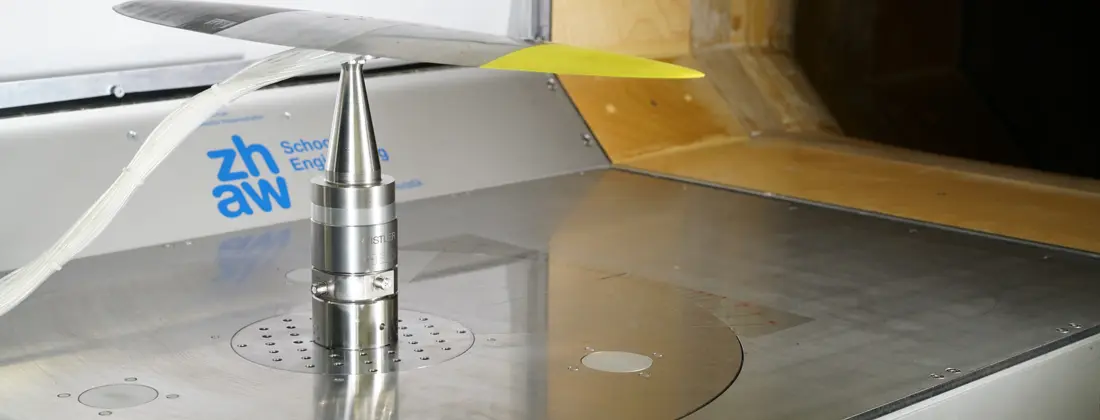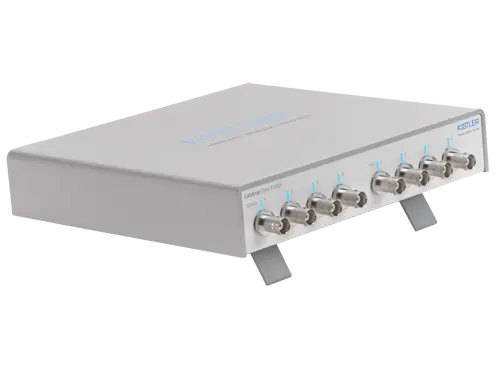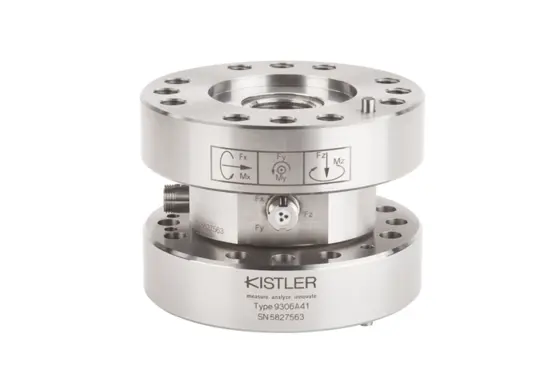Aerodynamics researchers use wind tunnel testing to study the effects of air moving past solid objects. The model is mounted in the middle of a tubular tunnel where air is blown past it – by a high-power fan system, for example. The models are instrumented with sensors to measure aerodynamic forces, pressure distribution and other aerodynamic parameters. Models with sting configurations are often equipped with piezoelectric multicomponent force sensors; in other cases, a dynamometer mounted at the wing root measures the wing's aeroelastic behavior under critical flow conditions.
Piezoelectric sensors from Kistler offer many key benefits for wind tunnel testing: their high rigidity ensures high natural frequencies and at the same time also reduces the deflection of the model significantly – a critical factor when measuring aeroelasticity or for measurements in transonic wind tunnels. In contrast to other measurement technologies, piezoelectric sensors offer an enormously wide measuring range. Thus, one single sensor can cover all measuring ranges, different angles of attack and a wide variety of airfoils – so setup is simple and installation costs are minimized. And with their rugged design, these sensors are extremely resilient against overloading. Kistler: the solution of choice for sensor technology in wind tunnel testing.







![Solutions for aviation testing [object Object]](https://kistler.cdn.celum.cloud/SAPCommerce_Document_Preview/961-213e.webp)
![AS9100 D certificate granted to the facility of the Kistler Group site in the U.S. [object Object]](https://kistler.cdn.celum.cloud/SAPCommerce_Document_Preview/999-240e.webp)
![JBEAM Measurement Data Evaluation [object Object]](https://kistler.cdn.celum.cloud/SAPCommerce_Document_Preview/961-713e.webp)